Man Huang
Enhancing Chest X-ray Classification through Knowledge Injection in Cross-Modality Learning
Feb 19, 2025Abstract:The integration of artificial intelligence in medical imaging has shown tremendous potential, yet the relationship between pre-trained knowledge and performance in cross-modality learning remains unclear. This study investigates how explicitly injecting medical knowledge into the learning process affects the performance of cross-modality classification, focusing on Chest X-ray (CXR) images. We introduce a novel Set Theory-based knowledge injection framework that generates captions for CXR images with controllable knowledge granularity. Using this framework, we fine-tune CLIP model on captions with varying levels of medical information. We evaluate the model's performance through zero-shot classification on the CheXpert dataset, a benchmark for CXR classification. Our results demonstrate that injecting fine-grained medical knowledge substantially improves classification accuracy, achieving 72.5\% compared to 49.9\% when using human-generated captions. This highlights the crucial role of domain-specific knowledge in medical cross-modality learning. Furthermore, we explore the influence of knowledge density and the use of domain-specific Large Language Models (LLMs) for caption generation, finding that denser knowledge and specialized LLMs contribute to enhanced performance. This research advances medical image analysis by demonstrating the effectiveness of knowledge injection for improving automated CXR classification, paving the way for more accurate and reliable diagnostic tools.
Soft-SVM Regression For Binary Classification
May 24, 2022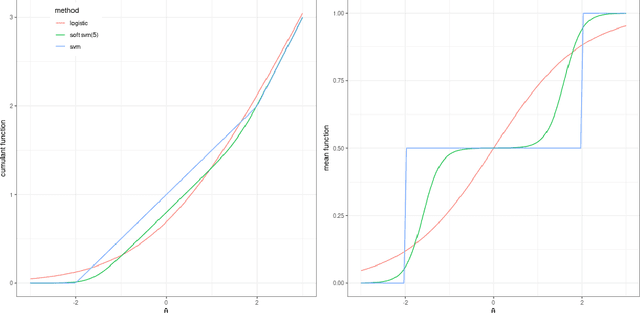
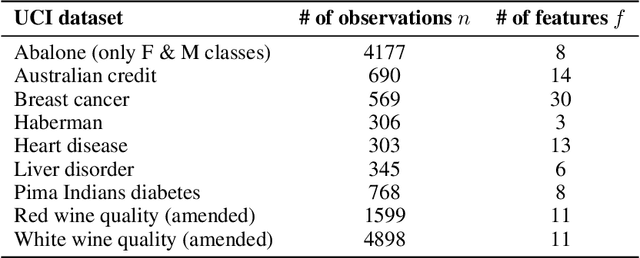
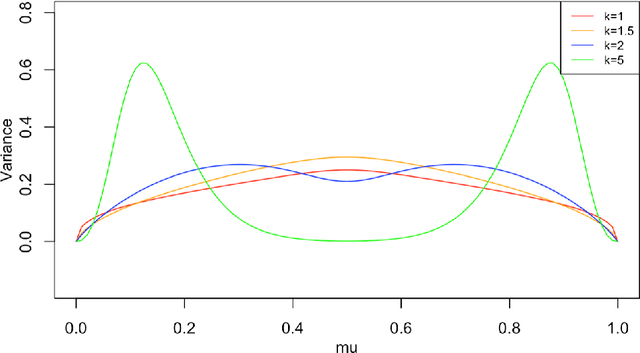
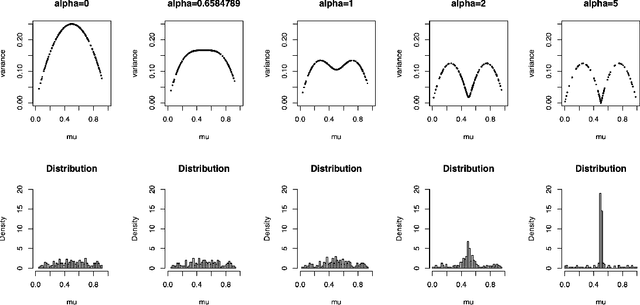
Abstract:The binomial deviance and the SVM hinge loss functions are two of the most widely used loss functions in machine learning. While there are many similarities between them, they also have their own strengths when dealing with different types of data. In this work, we introduce a new exponential family based on a convex relaxation of the hinge loss function using softness and class-separation parameters. This new family, denoted Soft-SVM, allows us to prescribe a generalized linear model that effectively bridges between logistic regression and SVM classification. This new model is interpretable and avoids data separability issues, attaining good fitting and predictive performance by automatically adjusting for data label separability via the softness parameter. These results are confirmed empirically through simulations and case studies as we compare regularized logistic, SVM, and Soft-SVM regressions and conclude that the proposed model performs well in terms of both classification and prediction errors.
Semi-supervised Optimal Transport with Self-paced Ensemble for Cross-hospital Sepsis Early Detection
Jun 18, 2021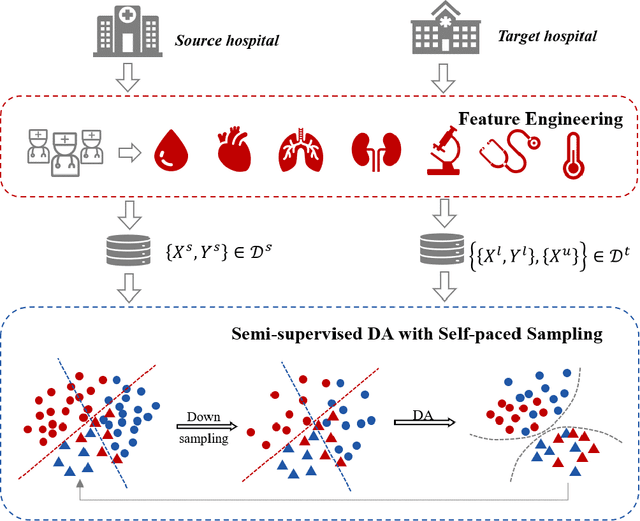
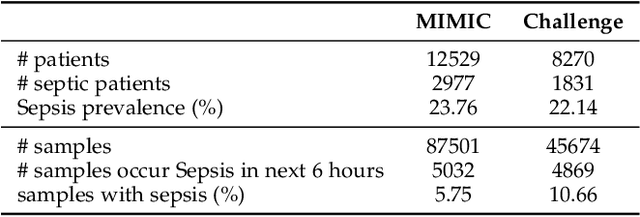

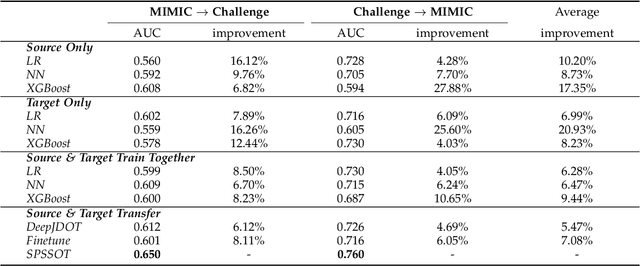
Abstract:The utilization of computer technology to solve problems in medical scenarios has attracted considerable attention in recent years, which still has great potential and space for exploration. Among them, machine learning has been widely used in the prediction, diagnosis and even treatment of Sepsis. However, state-of-the-art methods require large amounts of labeled medical data for supervised learning. In real-world applications, the lack of labeled data will cause enormous obstacles if one hospital wants to deploy a new Sepsis detection system. Different from the supervised learning setting, we need to use known information (e.g., from another hospital with rich labeled data) to help build a model with acceptable performance, i.e., transfer learning. In this paper, we propose a semi-supervised optimal transport with self-paced ensemble framework for Sepsis early detection, called SPSSOT, to transfer knowledge from the other that has rich labeled data. In SPSSOT, we first extract the same clinical indicators from the source domain (e.g., hospital with rich labeled data) and the target domain (e.g., hospital with little labeled data), then we combine the semi-supervised domain adaptation based on optimal transport theory with self-paced under-sampling to avoid a negative transfer possibly caused by covariate shift and class imbalance. On the whole, SPSSOT is an end-to-end transfer learning method for Sepsis early detection which can automatically select suitable samples from two domains respectively according to the number of iterations and align feature space of two domains. Extensive experiments on two open clinical datasets demonstrate that comparing with other methods, our proposed SPSSOT, can significantly improve the AUC values with only 1% labeled data in the target domain in two transfer learning scenarios, MIMIC $rightarrow$ Challenge and Challenge $rightarrow$ MIMIC.
 Add to Chrome
Add to Chrome Add to Firefox
Add to Firefox Add to Edge
Add to Edge